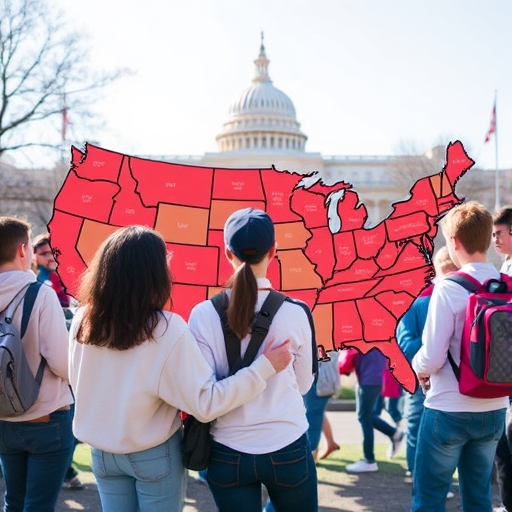How Many Public College Students in the US?
The landscape of higher education in the United States is vast and diverse, with a significant number of students attending public colleges and universities. Understanding the statistics surrounding public college enrollment can provide insight into trends in education, funding, and student demographics. In this article, we will delve into how many students are enrolled in public colleges in the U.S., factors affecting enrollment, and comparisons with private institutions.
Overview of Public College Enrollment
Public colleges and universities are institutions funded and operated by state governments. They often offer lower tuition rates for in-state students compared to out-of-state students. According to the National Center for Education Statistics (NCES), the number of public college students has fluctuated over the years, influenced by various factors such as economic conditions, demographic shifts, and policy changes.
Current Enrollment Statistics
As of the latest data from the NCES for the academic year 2021-2022, approximately 15.5 million students were enrolled in public colleges and universities across the United States. This figure represents a significant portion of the total higher education enrollment, which includes both public and private institutions.
Breakdown of Enrollment by Institution Type
To better understand the distribution of students among different types of institutions, consider the following breakdown:
| Institution Type | Enrollment (2021-2022) |
|---|---|
| Public Four-Year Universities | 8.0 million |
| Public Two-Year Colleges | 7.5 million |
| Private Non-Profit Institutions | 3.0 million |
| Private For-Profit Institutions | 0.8 million |
| Total Enrollment | 15.5 million |
Factors Influencing Enrollment
Several factors contribute to the enrollment numbers in public colleges, including:
- Economic Conditions: Economic downturns often lead to increased enrollment in public colleges as individuals seek to improve their job prospects through education.
- Tuition Rates: Public colleges generally offer lower tuition than private colleges, making them more attractive to students, especially those from lower-income backgrounds.
- Demographic Changes: Shifts in population demographics, including age, ethnicity, and geographic distribution, can influence enrollment figures.
- Policy Changes: State policies regarding funding for higher education and financial aid programs can impact enrollment numbers.
- Traditional Students: Approximately 60% of public college students are aged 18-24, representing the typical college-age population.
- Non-Traditional Students: About 40% are over the age of 25, including adult learners and those returning to education after a break.
- Female Students: Women comprise about 56% of the enrollment in public colleges.
- Male Students: Men account for approximately 44% of public college students.
- White Students: Approximately 50% of public college students identify as White.
- Hispanic Students: Roughly 20% of students identify as Hispanic or Latino.
- Black Students: About 13% identify as Black or African American.
- Asian Students: Approximately 7% identify as Asian.
- Northeast: 20% of public college enrollment
- Midwest: 25% of public college enrollment
- South: 35% of public college enrollment
- West: 20% of public college enrollment
- Public Colleges: Average tuition for in-state students is approximately $10,000 per year, while out-of-state students might pay around $27,000.
- Private Colleges: Average tuition is about $37,000 per year, making them considerably more expensive.
- Public Colleges: Average graduation rate is around 62%.
- Private Colleges: Average graduation rate is approximately 72%.
- Health Concerns: Students were wary of attending in-person classes.
- Financial Constraints: Economic uncertainty forced some students to delay their education.
- Shift to Online Learning: The transition to online classes made some students reconsider their college choices.
- Increased vaccination rates and easing of health restrictions.
- Enhanced financial aid and scholarship opportunities.
- A renewed focus on vocational and technical education as job markets evolved.
- Demographic Changes: As the population of traditional college-age students continues to decline, institutions may need to adapt their offerings to attract non-traditional students and adult learners.
- Technological Advancements: The integration of technology in education, including online and hybrid learning models, may change how students engage with public colleges.
- Policy Decisions: Ongoing discussions about funding for public higher education and student debt relief will play a significant role in shaping enrollment trends.
Demographics of Public College Students
Understanding the demographics of public college students is crucial for grasping the broader trends in higher education. Below are some key demographic insights based on recent statistics.
Age Distribution
Gender Breakdown
Racial and Ethnic Diversity
Public colleges in the U.S. are becoming increasingly diverse. Key statistics include:
Geographic Distribution
Public colleges are spread throughout the United States, with varying enrollment numbers based on geographic regions. According to NCES data:
Comparison of Public and Private Colleges
When comparing public colleges to private institutions, several important differences emerge, particularly in terms of enrollment, cost, and outcomes.
Enrollment Figures
As highlighted in the earlier table, public colleges have a significantly larger enrollment than private institutions:
| College Type | Average Enrollment |
|---|---|
| Public Colleges | 15.5 million |
| Private Non-Profit Colleges | 3.0 million |
| Private For-Profit Colleges | 0.8 million |
Cost of Attendance
Graduation Rates
Graduation rates can also vary between public and private institutions:
Employment Outcomes
While both types of institutions can lead to successful careers, graduates from public colleges may face different job market conditions depending on their field of study and geographic location.
The Impact of COVID-19 on Enrollment
The COVID-19 pandemic significantly impacted higher education, leading to shifts in enrollment patterns. During the 2020-2021 academic year, many public colleges experienced a decline in enrollment due to:
Recovery Trends
By the 2021-2022 academic year, public colleges began to see a rebound in enrollment, although some institutions continued to face challenges. Factors contributing to this recovery included:
Future Outlook for Public College Enrollment
The future of public college enrollment in the U.S. will likely be influenced by several key trends:
Frequently Asked Questions (FAQ)
1. How many public colleges are there in the U.S.?
As of 2022, there are over 1,000 public colleges and universities in the United States, including both two-year and four-year institutions.
2. What is the difference between public and private colleges?
Public colleges are funded and operated by state governments, typically offering lower tuition rates for in-state students. Private colleges are independently funded and often charge higher tuition.
3. Are public colleges less prestigious than private colleges?
Not necessarily. Many public colleges, such as the University of California, University of Michigan, and University of Virginia, are highly regarded and offer excellent academic programs.
4. How does financial aid work for public college students?
Public college students can access various forms of financial aid, including federal grants, state grants, scholarships, and student loans. In-state students may also benefit from lower tuition rates, making financial aid more effective.
5. What trends are shaping the future of public college enrollment?
Demographic shifts, economic factors, technological advancements, and policy changes are all influencing the future of public college enrollment.
Conclusion
Public colleges and universities play a crucial role in the higher education landscape of the United States. With approximately 15.5 million students enrolled, these institutions provide accessible education to a diverse population. Understanding enrollment trends, demographic shifts, and the impact of external factors is essential for policymakers, educators, and students alike. As we look to the future, the adaptability of public colleges will be key to meeting the evolving needs of students and the workforce.





